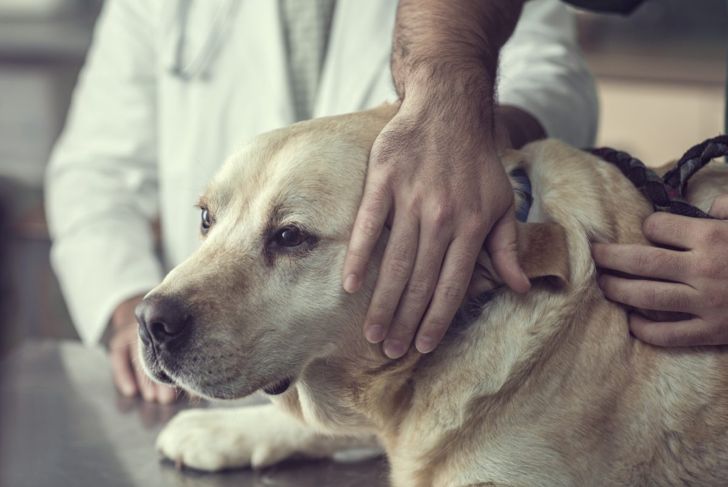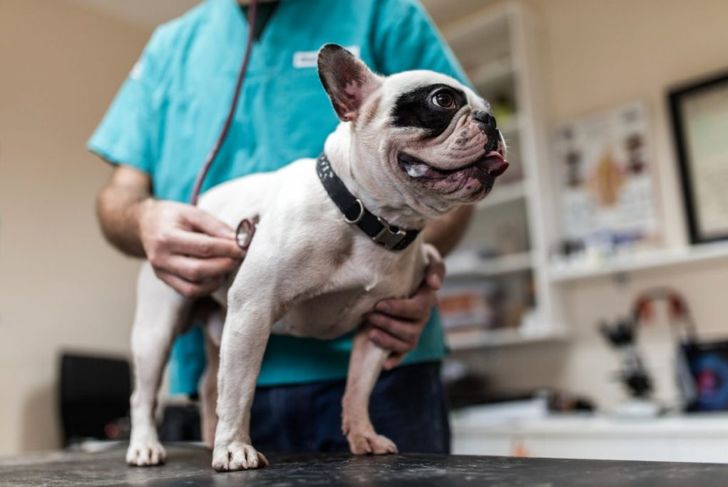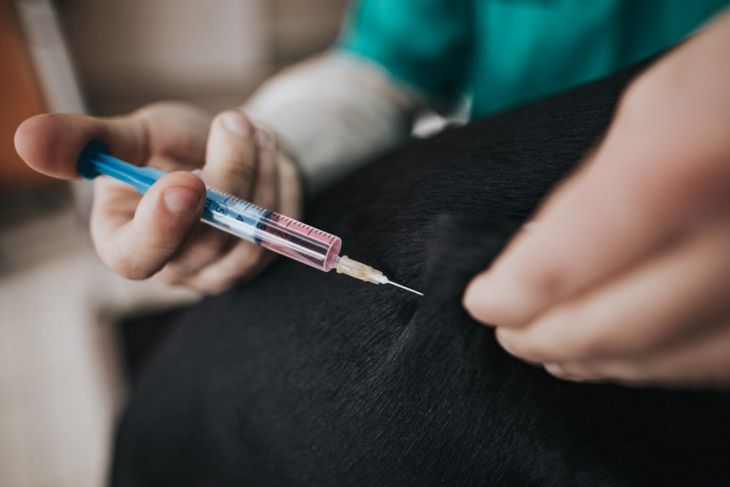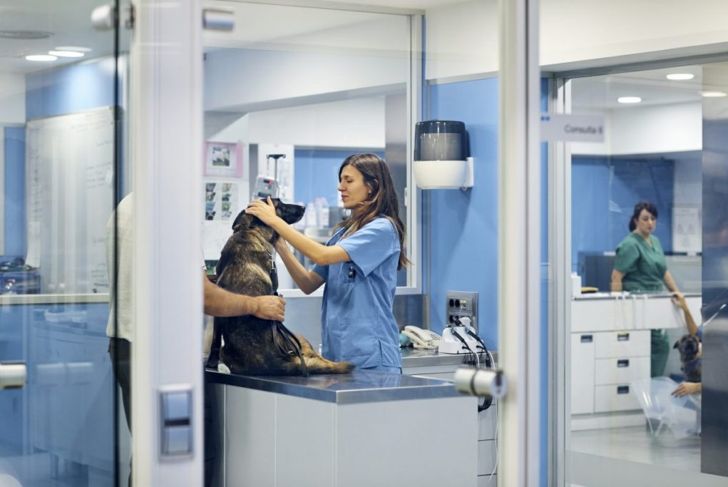Pyoderma in dogs is a dermal infection with itchiness and pus-filled bumps on the skin. If you’ve ever had even a mild reaction to poison ivy, you know how intensely itchy that can be. Pyoderma in dogs is somewhat similar, except it’s usually caused by bacteria. While pyoderma can occur in dogs of all ages, puppies are also prone to it. Besides itching and bumps, pyoderma can cause hair loss and flaky lesions. It’s a miserable condition for your dog, so it’s important to get your best friend treated by a vet ASAP.
Are there particular breeds at higher risk of pyoderma?
Any dog can get pyoderma, but certain breeds have a higher risk of developing the condition. For instance, American Cocker Spaniels commonly develop pyoderma on their lip folds. Shar peis, with their wrinkled skin, often develop pyoderma in those wrinkled folds. Dogs with very short heads, such as Boxers, Pugs, Bulldogs, Boston Bull Terriers, and Pomeranians, are also at higher risk of pyoderma. Unfortunately, German Shepherds are also prone to pyoderma and seem to be genetically predisposed to it.
When to suspect pyoderma
You have already sensed there is something wrong. Your dog is moping, maybe not so hungry, and you’re worried. You can examine your dog yourself before heading to the vet. If you see alopecia (hair loss), a red rash of nasty, pus-filled bumps on your dog’s skin, and your dog is scratching a lot — it’s most likely pyoderma. Typically, pyoderma is caused by a staph infection of the skin, so be sure to wash your hands after touching your itchy dog to prevent infection in yourself and others.
What are the causes of pyoderma?
There can be several causes of pyoderma. Most commonly, pyoderma will develop secondary to allergic dermatitis (skin allergy). The dog’s frequent scratching will irritate the skin and create small breaks where bacteria can invade and grow. It’s a vicious cycle: More itching leads to more scratching, which leads to worsening pyoderma and a spread of the infection.
How will my vet examine my dog?
Your vet will check your pet’s vitals (heart rate, breathing rate, and temperature) and then determine your pup’s potential underlying conditions. A skin culture may be recommended to find what pathogen is causing the infection. If she suspects an endocrine disorder, she will also order blood tests. In some cases, x-rays or CT scanning may be ordered to rule out a tumor or other condition.
Treating pyoderma
Treatment is determined by the type of pyoderma your dog has and the severity of the condition. Pyoderma is often treated with antibiotics for three to four weeks, but sometimes an eight-week course is prescribed. Topical treatment with medicated shampoo or spray is often added. It’s also important to make sure your dog’s bedding is clean and completely dry. Sometimes antihistamines or low doses of steroids are prescribed to relieve the itch-scratch cycle.
Are there different types of pyoderma?
Several sub-types of pyoderma exist. The most common is surface pyoderma which usually responds to treatment quickly. Deep pyodermas are game-changers and come in several forms. Canine chin or muzzle acne is a type of deep pyoderma. Deep pyodermas can also occur in the nose or between toes. Another type of deep pyoderma is caused by frequent licking of the same spot, which is usually related to a food or contact allergy. Finally, there is pseudo-pyoderma, which is not caused by bacterial infection but by allergies or fungus.
Can pyoderma recur?
Recurrent pyoderma is common, unfortunately. This is especially true if there is an underlying condition that hasn’t yet been diagnosed. There are also environmental and hereditary factors. One scary scenario is if your dog has had repeated bouts of pyoderma with repeated rounds of antibiotics. This can lead to antibiotic-resistant pyoderma.
What can be done for antibiotic-resistant pyoderma?
There is a relatively new treatment for recurring or antibiotic-resistant pyoderma, which is being adopted by forward-thinking vets. It’s called Staphage Lysate, an immune-boosting vaccine. Staphage Lysate shows promise in reducing chronic staph-induced skin infections, as well as boosting your dog’s immune system to fight off disease-causing pathogens.
Can pyoderma be fatal?
Pyoderma is fatal only on rare occasions. Perhaps your pet has a serious chronic health condition, like kidney disease. If the infection goes on too long, that can lead to sepsis, or full-body infection, which is often fatal as it shuts down weakened and even healthy organs. Even without sepsis, pyoderma can occasionally lead to systemic inflammatory response syndrome (SIRS), which can also be fatal. Don’t wait to treat your pet if you suspect pyoderma.
Can I catch pyoderma from my dog?
Pyoderma is a “contained” infection, meaning staph is normally found in modest amounts on your dog’s skin. Because of this, it’s usually not transmissible to humans or even other pets. But, if you or someone in your household has a compromised immune system (think chemotherapy, autoimmune disease, babies, or the very elderly), be extra careful with your handwashing and hygiene in general and speak to your doctor to avoid the chance of spreading the infection.

 Home
Home Health
Health Diet & Nutrition
Diet & Nutrition Living Well
Living Well More
More




















